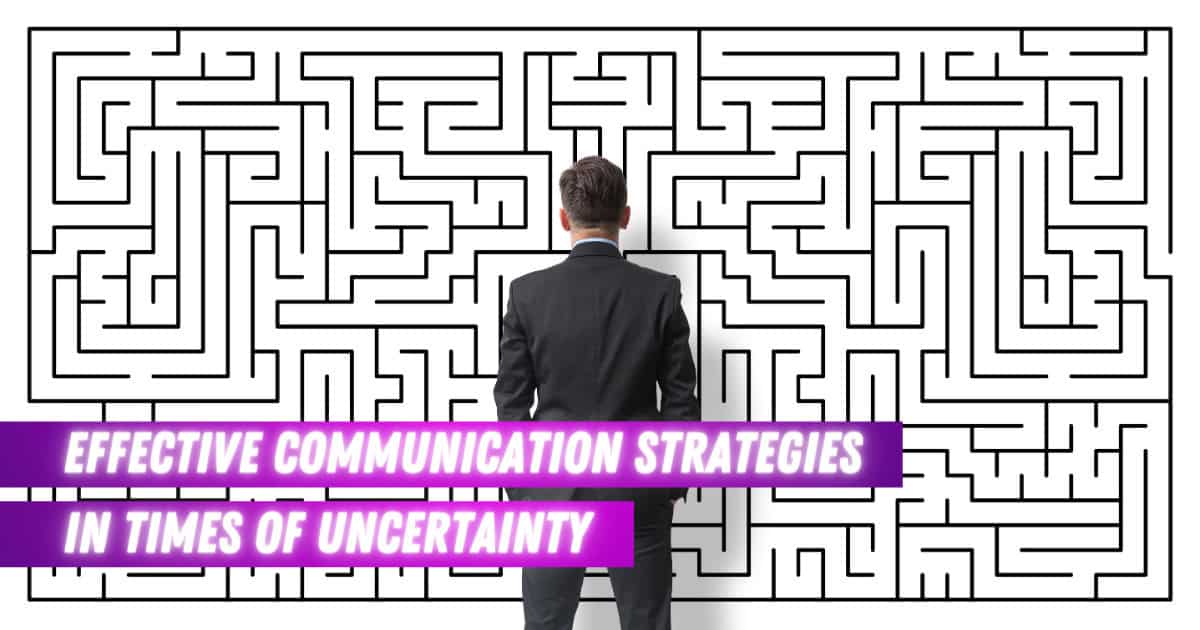In the dynamic landscape of today’s business world, change is constant. As an executive leader, your ability to navigate and lead through uncertainty is crucial for organizational success. One of the most powerful tools in your leadership arsenal during times of change is effective communication. How you communicate with your team can make the difference between chaos and clarity, confusion and confidence. In this blog, we’ll explore key strategies and insights to help you excel in leading through change by communicating effectively.
Change can bring uncertainty, but it also presents opportunities for growth and innovation. As an executive leader, your role in times of uncertainty is pivotal. Your ability to communicate effectively can inspire confidence, foster resilience, and drive alignment within your team. Let’s dive into actionable strategies that will empower you to lead with clarity and purpose during periods of change.
Transparency Builds Trust in times of Uncertainty
During uncertain times, transparency in communication is paramount. Be open and honest with your team about the challenges and changes ahead. Share as much information as you can, acknowledging what is known and being upfront about what is still uncertain. When your team trusts that you’re being forthright, they’ll feel more engaged and committed to weathering the storm together.

Frequent and Clear Updates
Maintain regular communication cadence. Schedule frequent updates to keep your team informed of any developments or changes. Use multiple channels such as team meetings, emails, or company-wide announcements to ensure everyone receives critical information. Clear and concise messaging helps alleviate anxiety and prevents misinformation from spreading.
Empathy and Emotional Intelligence
Understand that your team members may experience fear or anxiety during times of uncertainty. Show empathy and demonstrate emotional intelligence in your communications. Listen actively, acknowledge concerns, and offer support where needed. Your ability to connect on a human level will strengthen relationships and foster a sense of unity.
Provide Context and Vision
Communicate the bigger picture. Provide context around why changes are happening and how they align with the organization’s vision and goals. Help your team understand their role in the broader context of the transformation. When individuals see the purpose behind the change, they are more likely to embrace it and contribute positively.

Encourage Two-Way Dialogue
Create opportunities for open dialogue and feedback. Encourage team members to ask questions, share their perspectives, and voice concerns. Actively listen to their input and incorporate constructive feedback where possible. When employees feel heard and valued, they become more invested in the change process.
Conclusion
Navigating change requires strong leadership, and effective communication is the cornerstone of successful leadership during uncertain times. By implementing these strategies—building trust through transparency, providing clear updates, demonstrating empathy, articulating vision, and fostering dialogue—you’ll be better equipped to guide your team through any challenges that arise.
Remember, leading through change is not just about delivering information; it’s about inspiring and empowering your team to adapt and thrive. Embrace the opportunity to strengthen your communication skills and cultivate resilience within your organization.
Get rid of doubt and become confident in your Leadership decisions – Reach out to me at Schedule a call or video conference with Kyle Kalloo or call us right now at: 1-844-910-7111



